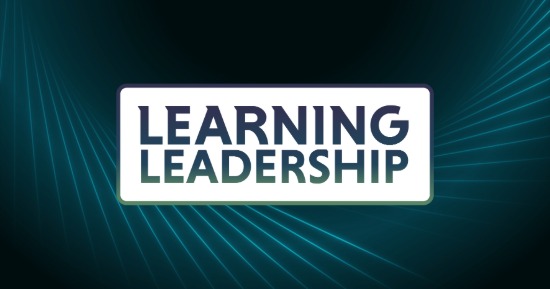When you were a kid, what did youwant to be when you grew up? A doctor? A teacher? A firefighter? An eLearninginstructional designer (ID) doing corporate training? Hmmm… Yeah, probably notthat last one.
As a teenager and young adult, Iset my sights on becoming a writer or a teacher. I was an English major withthoughts of becoming a professor or a high school English teacher. Lucky me, asan eLearning instructional designer, that’s pretty much what I get to do. But Istumbled into this field, as did most of us who do this work.
Let’s get personal
How did I get here? Well, Idemonstrated aptitude. I worked as part of an internal team, designing a callcenter application back in the early days of GUI interfaces. (I don’t think wewere even using e-mail yet!) Because I’d helped design the system, I knew it insideand out and could explain it really well to all of the call center reps. Voila!A classroom trainer was born. And because I could string sentences together ina coherent way – and because I thoughtit was pretty much fun – I startedwriting a weekly how-to newsletter. Performance support and job aids, lovinglyprinted out and stuffed into over a hundred company mailboxes.
From there I went to a “multimediaproduction” company that hired me as an instructional designer. We createdtraining programs delivered on CD ROM. I had never heard of an instructionaldesigner, but it all sounded so glamorous: video production, and computers andgraphics. So there I was – aninstructional designer, almost by accident. And 16-years later, here I stillam.
What about you?
So what’s your story? Did you havea similar path on the way to becoming an ID involving accident and intrigue?Did you set off down your career path with your sights set on something quitedifferent than what you’ve turned into – at least for the moment? When I havethis conversation with groups of instructional designers, there’s usually a lotof affirming head nods.
As eLearning continues to grow andexpand as an industry, we see more and more people finding their way into thefield by accident. We tap Subject Matter Experts (SMEs) for their expertise andinstitutional knowledge to create training. But with no formal training ininstructional design, and nothing to go on but instinct and experience (“Yeah,I went to school so I know how people should be taught”), SMEs often just pickup some PowerPoint templates and do their best. They might mimic other eLearningcourses, which, sadly, are more often than not your standard-variety-click-to-learntext-heavy extravaganzas that give a lot of eLearning a bad name.
Kicking it up a notch
So what can you do – for yourselfand for your internal teams – to startcreating better eLearning that actually achieves real performance change? Howcan you stop going by the “dump and pray method” of design (this is what mygrandmother used to call her approach to cooking), and instead create learningdesigns that are effective and that – gasp! – actually help people do their jobsbetter?
You can do lots of things, butlet’s start at the beginning.
What’s the fire in your belly?
First and foremost: Get yourpassion on.
I decided long ago that if this wasindeed going to be my career, then I might as well do it with as much passionand gusto as I could bring to it. That if I was going to spend my days writingscripts and QAing eLearning programs, that I should do it well – and create programs that people mightactually learn from and enjoy.
Make connections
Here are some of the ways I’ve got mypassion on over the past few years, and I offer them up as suggestions to you:
Connectwith other eLearning professionals. Blogs and Twitter feeds provide lots ofamazing resources and contact with individuals struggling with some of the samechallenges as you. Tony Karrer’s eLearning Learning blog feed aggregator (https://www.eLearninglearning.com/)is a great place to start to find blogs that interest you. Jane Hart’scompilation of edu-tweeters ( https://c4lpt.co.uk/social-learning-handbook/workplace-learning-professionals-who-blog-andor-tweet/)lists tweeters in the learning and development space. [Editor’s Note: The eLearning Guild has an excellent and activeGroup on LinkedIn, too (https://www.linkedin.com/groups?gid=102144).]
Readbooks. Lots of ‘em – about instructional design and learning. Embrace yourinner learning nerd and put books like Ruth Clark and Richard Mayer’s classic eLearning and the Science of Instructionon your bedside table, or pick up Julie Dirksen’s new contribution to thescene, Design for How People Learn.
Signup for free online Webinars on eLearning design and other related topics. TheeLearning Guild offers online forums and Webinars every month, but also checkout regular offerings from ASTD and Training Magazine Network. Presenters sharecontent on a wide variety of topics including the latest research aboutlearning, demos of projects, ideas about new technologies and more. I like totry and hit one or two Webinars a month, if I’m lucky.
Goto conferences. If your budget can afford it, get some face-time with otherlearning professionals. The eLearning Guild’s Learning Solutions conference comingup this March in Orlando or the DevLearn conference in November are two of thebest conferences for your money. ASTD and Training are two other biggies. Ifyou don’t have the budget to attend in person, you can still dip into thelearning stream by watching the conference backchannel on Twitter and blogs. https://www.learningsolutionsmag.com/articles/705/lessons-learned-from-the-mlearncon-2011-backchannel
A degree might be the key
Consider a degree or certificate program in instructionaldesign or educational technology. Thisisn’t a requirement to career success, but may give you the kick-start and the inspirationyou need if you’re just getting started, or want to gain deeper expertise.
In an ongoing survey on my blog https://cammybean.kineo.com/2007/11/instructional-designers-do-you-have.html,I’ve been asking practicing IDs whether they have an advanced degree in thefield. With 504 responses to date, 63% of IDs say that they do NOT have anadvanced degree; while only 16% of those without degrees say they that someonedenied them work as an IDer because they didn’t have one. I say it’s not arequirement (and have gotten into many a heated argument about this with otherIDs), but it can’t hurt, and it may certainly open up doors for you – or atleast help you learn more about your passion.
If you do want to go down this route, besure to research various programs, as they’re not all equal.
Also check out Patti Shank’s Guild Report on eLearningDegrees and Credentials: Needs of the eLearning Professional. The Guild’sresearch results paint a slightly different picture than the results of myblog’s more informal survey, so it’s good to check out both. https://www.eLearningguild.com/research/archives/index.cfm?id=151&action=viewonly
[Editor’s Note: Lorna Collier offers somegreat advice about picking an online program in an article published inLearning Solutions Magazine: https://www.learningsolutionsmag.com/articles/670/online-education-for-instructional-designers-picking-the-right-program]
Full disclosure about me – I don’t have an advanced degree inID, and while sometimes I think it would be nice to have some fancy lettersafter my name to give me a bit more credibility, I don’t think spending thetime on an ID degree would be worth my time at this point. Not that I don’thave something to learn about ID – of course I do – but I’d rather focus onsomething more specific like cognitive science.
Share with your team
Share what you learn with your teammates. If you’reresponsible for managing Subject Matter Experts who now design trainingprograms within your organization, help them get better at what they do, too. Helpthem learn to actually be instructional designers, so that you can proactivelyprevent a few train(ing) wrecks.
Even those of you who serve as one-stop-super-shops and who provideall of an organization’s eLearning needs can share what you’re learning withothers in the company. There’s a future coming when training no longer liveswithin a single department but must rather go viral throughout the organization(some would say it’s an already-existing present). That is, EVERYONE needs tobecome an instructional designer in order to keep the enterprise vital andrelevant. As a passionate IDer, you can help lead that change.
Go out and feed your passion!
You may have found your way into this field by accident, butit is what you’re doing in the here and now, so you might as well do it welland with great passion and delight. Your life will be more fulfilling that way.And hopefully you’ll be making eLearning a better experience for those who needto learn from it.
Want to know moreabout instructional design? Join Cammy in her pre-conference workshop “The Accidental Instructional Designer” at this year’s Learning SolutionsConference in March.










